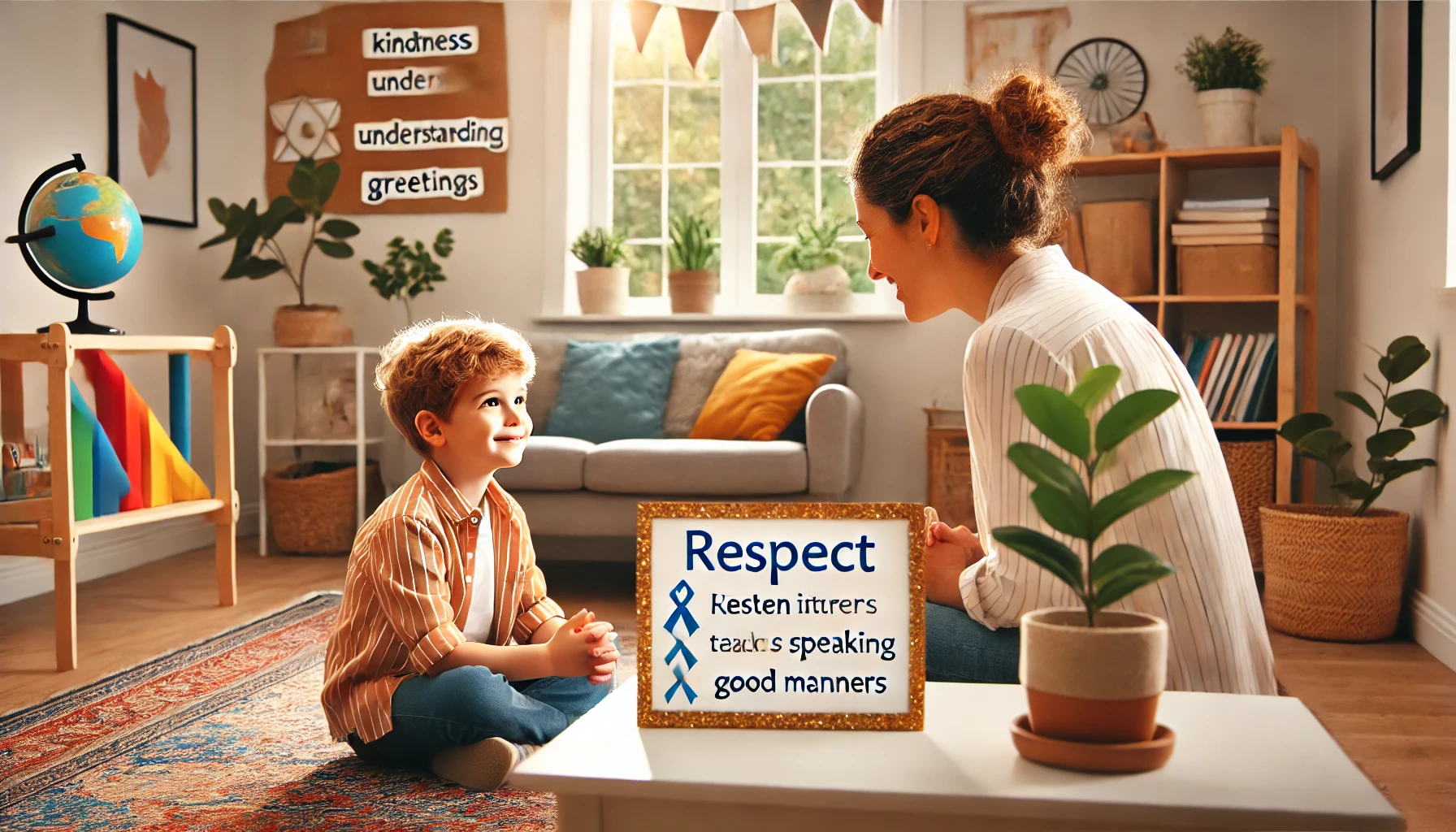How to Teach Young Children About Respect at Home
Respect is a fundamental value that helps children build positive relationships, develop empathy, and interact kindly with others. Teaching respect at an early age encourages children to listen, be polite, and appreciate differences. Parents play a key role in modeling respectful behavior and reinforcing it through daily interactions. In this article, we’ll explore practical ways to teach young children about respect at home.
Why Teaching Respect is Important
- Encourages kindness and empathy – Helps children understand and appreciate others’ feelings.
- Strengthens social skills – Teaches children how to interact politely and resolve conflicts.
- Builds self-discipline – Encourages children to follow rules and take responsibility for their actions.
- Promotes a positive home environment – Reduces conflict and fosters mutual understanding.
- Prepares for school and social situations – Helps children work well with teachers, classmates, and friends.
1. Model Respectful Behavior
Children learn respect by observing how adults treat others.
Activity Idea:
- Speak politely and use phrases like “please,” “thank you,” and “excuse me.”
- Show respect by listening attentively when your child talks.
- Treat others with kindness, including family members, neighbors, and service workers.
What Kids Learn:
- The importance of respectful communication
- How to treat others with kindness
- That respect is a two-way interaction
2. Teach Active Listening Skills
Respect begins with listening and valuing what others have to say.
Activity Idea:
- Encourage eye contact and nodding while listening.
- Use role-playing to practice taking turns speaking and listening.
- Set up “listening time” where children practice not interrupting during conversations.
What Kids Learn:
- The importance of paying attention to others
- How to be patient and wait for their turn to speak
- Effective communication skills
3. Use Books and Stories to Teach Respect
Stories help children understand respect through relatable characters.
Activity Idea:
- Choose books that highlight respect, kindness, and good manners.
- Pause while reading to ask, “How did this character show respect?”
- Discuss different ways to show respect in real life.
What Kids Learn:
- The value of treating others kindly
- How actions impact relationships
- Respectful problem-solving strategies
4. Set Clear Expectations and Boundaries
Helping children understand family rules teaches them to respect guidelines.
Activity Idea:
- Create a simple list of family rules, such as “Use kind words” and “Take turns speaking.”
- Explain why certain behaviors are expected, rather than just saying “Because I said so.”
- Reinforce boundaries consistently with gentle reminders.
What Kids Learn:
- The importance of following rules
- How respect applies to everyday interactions
- Self-discipline and accountability
5. Teach Respect for Differences
Respect includes valuing different opinions, cultures, and abilities.
Activity Idea:
- Expose children to books, shows, and activities that showcase diversity.
- Encourage curiosity by answering questions about different customs and traditions.
- Model inclusivity by treating everyone with kindness, regardless of differences.
What Kids Learn:
- Acceptance of different perspectives
- Empathy and appreciation for diversity
- How to treat everyone with respect
6. Encourage Respect for Personal Space and Belongings
Teaching children to respect boundaries helps them interact appropriately with others.
Activity Idea:
- Teach the importance of knocking before entering a room.
- Encourage asking before borrowing or touching someone else’s belongings.
- Use a “personal space bubble” activity to help children understand boundaries.
What Kids Learn:
- Awareness of others’ comfort zones
- The importance of permission and consent
- How to respect shared spaces
7. Reinforce Respectful Conflict Resolution
Helping children resolve disagreements respectfully strengthens their problem-solving skills.
Activity Idea:
- Teach phrases like “Let’s find a way to solve this together” instead of blaming.
- Role-play conflict scenarios and discuss better ways to handle them.
- Encourage compromise by asking, “How can we both be happy with this solution?”
What Kids Learn:
- How to manage disagreements calmly
- The value of listening to different viewpoints
- Conflict resolution strategies
8. Praise and Reinforce Respectful Behavior
Recognizing and encouraging respectful actions motivates children to continue them.
Activity Idea:
- Say, “I noticed how you waited for your turn to talk—that was very respectful!”
- Use a sticker chart to track respectful behaviors.
- Celebrate kindness by pointing out when a child includes others or listens well.
What Kids Learn:
- Positive reinforcement for good habits
- The impact of respect on relationships
- The importance of consistency in behavior
Final Thoughts
Teaching respect at home helps children build positive relationships and navigate social situations with kindness and understanding. By modeling respect, setting clear expectations, and reinforcing positive behaviors, parents can create a home environment where respect becomes a natural and valued part of daily life.
